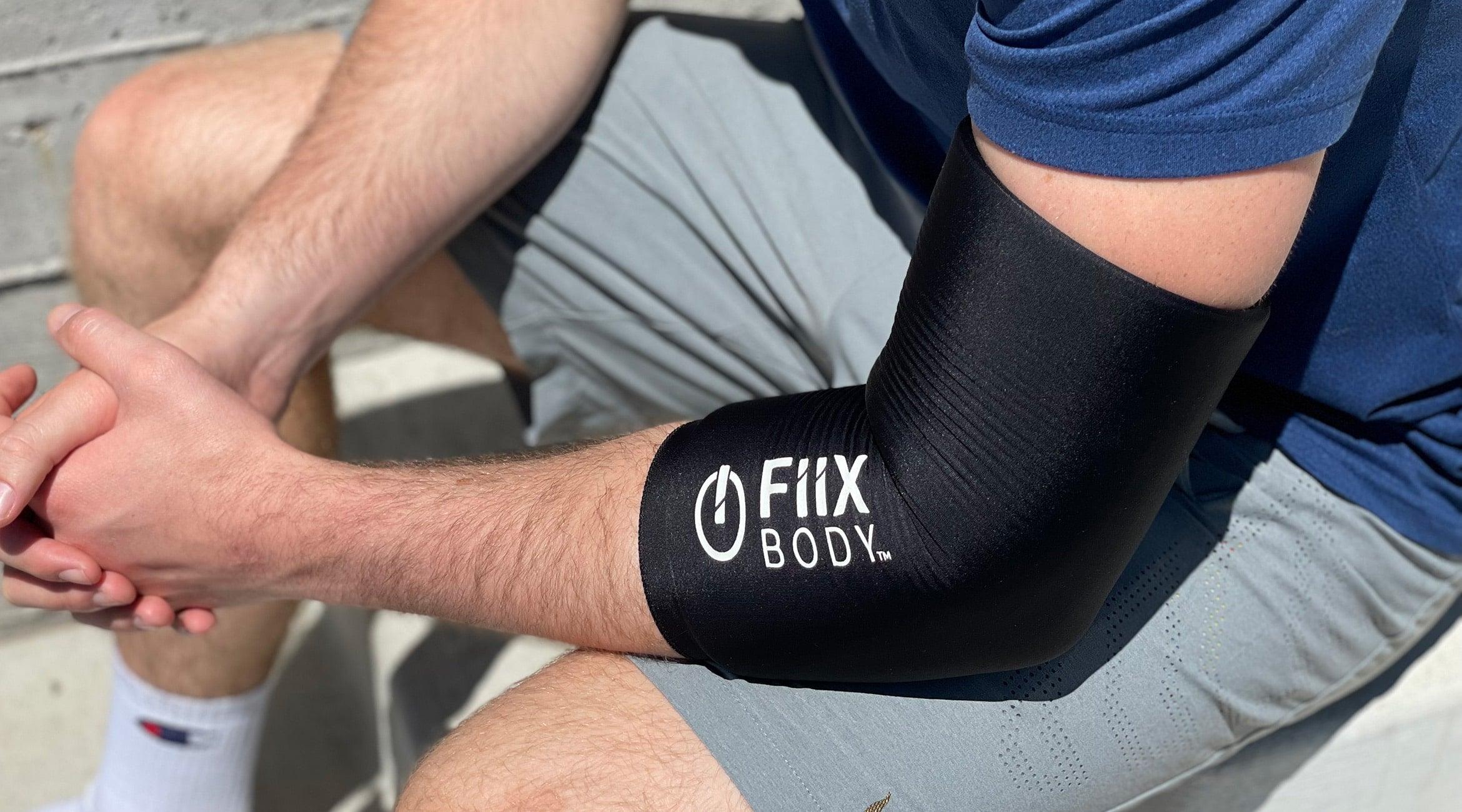Self-treatment for tennis elbow often includes wearing a compression sleeve, brace or strap that is available over-the-counter. But do these external supports actually work?
What Causes Tennis Elbow Pain?
Tennis elbow is caused by repetitive motions of the forearm and wrist that lead to tiny tears and inflammation in the two forearm tendons. Inflammation causes discomfort and limited function in the wrist and forearm – from a dull ache to burning to sharp pain, along with elbow stiffness, weak grip strength and numbness or tingling in the fingers.
Tendons are made of thick bands of collagen that have reduced blood supply and poor circulation, so they tend to heal slowly or partially. To promote healing, tendons need increased circulation, which boosts oxygen and healing properties to repair and form new collagen fibers.
How do Braces and Compression Sleeves Work?
Braces and compression sleeves provide additional support to the elbow and forearm to limit movement and enable the tendons, muscles and joint to rest. These products also can help disperse forces in the elbow and forearm that aggravate the area.
In the short-term, braces and compression sleeves can help alleviate tennis elbow pain. But once the brace or compression sleeve is removed, and movement resumes, discomfort returns. Because they don’t actually heal the injury, braces and compression sleeves shouldn’t be worn over long periods of time or be the only method of treatment.
The Limitations of Braces and Compression Sleeves
To recover from tennis elbow, the tendons must be healed. But this process requires enhanced circulation to the tendons, which braces and compression sleeves do not stimulate. In fact, immobilizing the area with these external supports actually reduces blood flow and oxygen supply to the tendons.
Plus, tight compression sleeves compress the blood vessels to the tendon and further restrict circulation. And immobilization and compression can lead to the formation of scar tissue and adhesions, and ultimately can result in additional weakening of the tendon.
The Bottom Line on Compressions Sleeves and Tennis Elbow
To fully heal, tennis elbow sufferers must stimulate blood flow to the tendons and strengthen and stretch the area. Effective treatment options include physical therapy, exercises, stretching and instrument-assisted soft tissue mobilization (IASTM).
IASTM is a proven clinical treatment that physical therapists have employed for more than a decade. For tennis elbow, IASTM applies controlled microtrauma to the tendon to stimulate a local inflammatory response, which increases circulation, sends healing cells and oxygen to the site, breaks down adhesions and scar tissue and removes fascial restrictions.
Together, this promotes cellular and tissue regeneration and collagen production, which alleviates pain, helps the tendon regain normal tensile strength and promotes functional restoration over time.
The new Fiix Elbow device from Stā Active automates IASTM with a convenient, at-home treatment, combined with strength and stretching exercises to boost circulation, stimulate collagen cross-linkage formation, help improve mobility and reduce risk of future injury.
In Phase 1 and 2 trials of the E5, 96 percent of subjects reported a reduction in pain, along with a greater than 76% improvement in functional activities, with a 85% average increase in grip strength.
So keep in mind: braces and compression sleeves can temporarily help, but not heal, tennis elbow. And if you're using a brace or compression sleeve while lifting weights - check out the article treat tennis elbow from weightlifting.


Share:
How Can I Work Out My Biceps with Tennis Elbow?
Safely Treat Tennis Elbow at Home